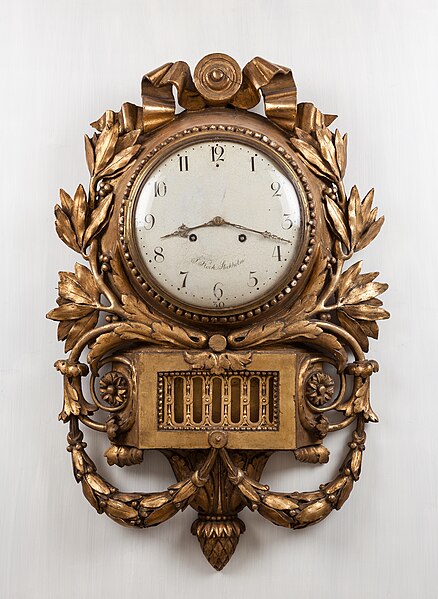A pendulum clock is a clock that uses a pendulum, a swinging weight, as its timekeeping element. The advantage of a pendulum for timekeeping is that it is an approximate harmonic oscillator: It swings back and forth in a precise time interval dependent on its length, and resists swinging at other rates. From its invention in 1656 by Christiaan Huygens, inspired by Galileo Galilei, until the 1930s, the pendulum clock was the world's most precise timekeeper, accounting for its widespread use. Throughout the 18th and 19th centuries, pendulum clocks in homes, factories, offices, and railroad stations served as primary time standards for scheduling daily life, work shifts, and public transportation. Their greater accuracy allowed for the faster pace of life which was necessary for the Industrial Revolution. The home pendulum clock was replaced by less-expensive synchronous electric clocks in the 1930s and '40s. Pendulum clocks are now kept mostly for their decorative and antique value.

Pendulum clock conceived by Galileo Galilei around 1637. The earliest known pendulum clock design, it was never completed.
Vienna regulator style pendulum wall clock
A lantern clock that has been converted to use a pendulum. To accommodate the wide pendulum swings caused by the verge escapement, "wings" have been added on the sides
Grandfather clock
A clock or chronometer is a device that measures and displays time. The clock is one of the oldest human inventions, meeting the need to measure intervals of time shorter than the natural units such as the day, the lunar month, and the year. Devices operating on several physical processes have been used over the millennia.
An analog pendulum clock made around 18th century
Casio F-91W digital watch, one of the most popular watches ever
Simple horizontal sundial
The flow of sand in an hourglass can be used to keep track of elapsed time.








